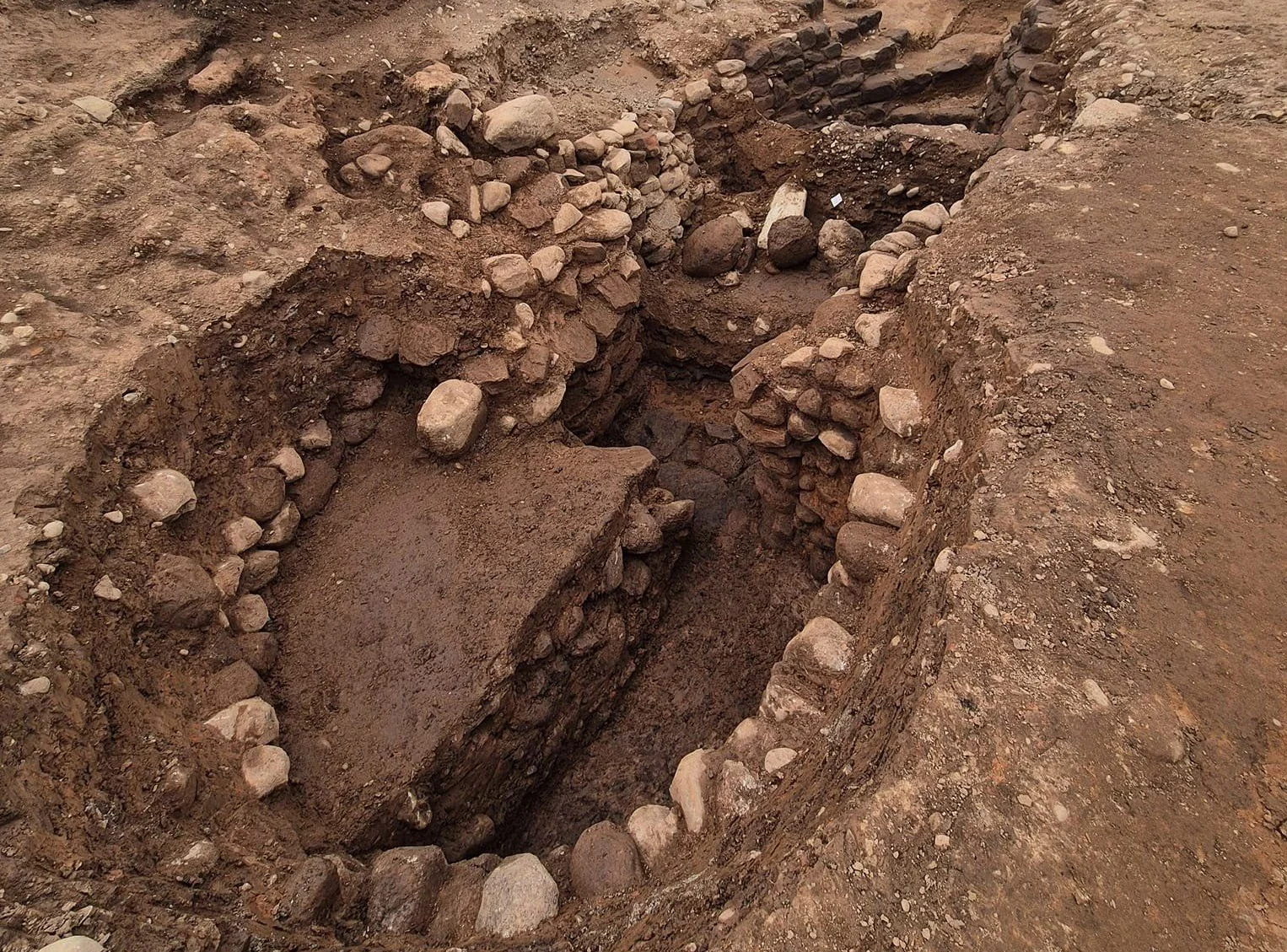Archaeologists from Grampus Heritage & Training Limited have uncovered a Viking Age timber building near the village of Holme St Cuthbert, located in the county of Cumbria, England.
Cropmarks first identified in 2022 suggested a monastic Grange Farm in the lands owned by the nearby Holme Cultram Abbey, a Cistercian monastery founded in the 12th century AD.
A geophysical survey conducted as part of the High Tarns Archaeology Project identified a 50m x 15m timber building, along with several promising anomalies and archaeological features in the surrounding area.
This prompted a community-led excavation in late 2024, where archaeologists uncovered postholes that confirmed the building’s dimensions. Carbon dating of a load-bearing timber from the central aisle placed the structure’s construction between AD 990 and 1040 during the late Viking Age.

According to a press statement by Grampus Heritage & Training Limited: “The dating of the timber building to the late 10th / early 11th century shows that the structure is not at all related to, and significantly pre-dates, the Cistercian monastery of Holme Cultram.”
“Furthermore, this date allows us to interpret the building as a large Hall of the late Viking Age. As if that wasn’t exciting enough, this is the largest Viking Age building to be discovered and excavated in Britain.”
Excavations also revealed traces of a grain drying kiln, or ‘corn-dryer,’ including the access steps, stone-lined walls, remnants of an arch over the stoke-hole, and a sub-circular drying chamber built using clay and cobble.
Few dateable objects have been recovered, largely due to centuries of intensive farming that have disturbed the site, as well as soil conditions that prevent the preservation of organic materials. Only two small sherds of pottery were unearthed which were deposited during the late medieval period above the collapsed drying kiln.
Header Image Credit : Grampus Heritage & Training Limited
Sources : Grampus Heritage & Training Limited





